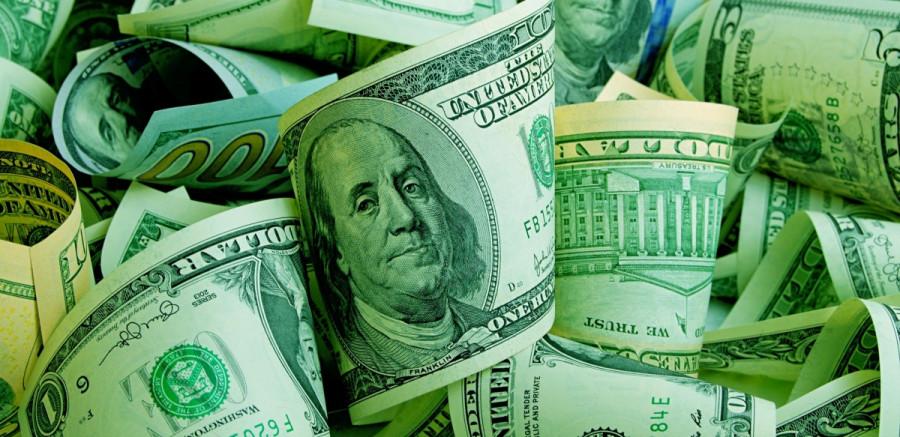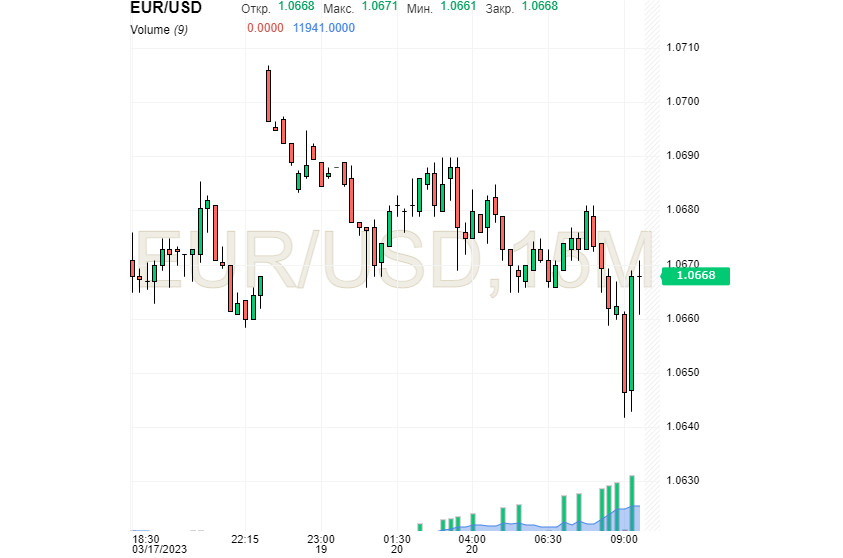The U.S. currency started the new week by actively recovering. According to analysts, the greenback is gaining potential after its recent decline. However, concerns about the Federal Reserve's actions prevents the dollar from rising further.
Last week, experts recorded an increase in pressure on the US currency, fearing the onset of a financial crisis. Against this background, market expectations about a possible Fed rate cut sharply increased. Many traders and investors feared another round of crisis after the problems that befell Silicon Valley Bank and Signature Bank. The financial difficulties that have engulfed the largest Swiss banks UBS and Credit Suisse have also added fuel to the fire.
Earlier, it was reported that UBS plans to acquire Credit Suisse as part of a deal involving the merger of both organizations. The acquisition is estimated at $3.2 billion. At the same time, the Swiss authorities provided UBS with financial assistance worth 9 billion francs to cover potential losses. Recall that Credit Suisse, a 167-year-old lender, was on the verge of financial collapse. In order to prevent the crisis from intensifying, UBS bank will have to take control of Credit Suisse into its own hands. Take note that the latter received a loan from the Swiss central bank worth $54 billion, but this did not save the troubled lender.
The current situation has had an ambiguous effect on the US currency. On the one hand, the greenback found the strength to rise, and on the other, it remained under pressure. According to Goldman Sachs currency strategists, the high level of financial stress and constant inflationary pressure negatively affected the USD. Such a development of events pushes the Fed to further raise rates, experts said. Considering the recent fall of the greenback, experts came to the conclusion that the stress in the US banking sector will be moderate, and the dollar will hold its position.
Currency strategists at JPMorgan Chase believe that the expectation of easing monetary policy of the Fed creates the preconditions for the greenback's decline. According to experts, now it's better to sell the dollar against other reserve currencies, such as the yen, Swiss franc and euro. At the same time, JPMorgan Chase warns against betting on massive shorts on the USD against other currencies as the greenback will go up in price if financial stress gets worse. However, under such a scenario, the protective assets, primarily the dollar, will be in demand, experts said.
Monday morning, March 20, the U.S. currency slightly fell against the euro. In this background, market participants are acting cautiously, taking a wait-and-see attitude amid the current uncertainty in the global banking sector. On the first day of the new week, EUR/USD was trading at 1.0668, trying to move into an upward spiral and acting with varying success.
Serious problems in the global financial system forced market participants to reconsider previous scenarios related to the Fed's interest rate hike. In the current situation, the central bank's initial plan, which provided for a key rate hike by 50 bps at the March 21-22 meeting, has come into question. Experts admit that this month, the US central bank will refuse to increase rates. At the same time, a number of analysts (60%) are set for its rise, despite the current difficulties in the financial sector.
As the March FOMC meeting approaches, currency strategists are considering 3 scenarios of possible actions:
1) The Fed rate will remain unchanged (21.8% of respondents admit this possibility)
If the central bank remains stable and does not raise rates due to problems in the global financial sector, then inflation will gain momentum again. As a result, the Fed may fail, and the Bank's reputation will be significantly damaged. Earlier, Fed Chairman Jerome Powell reiterated the need to maintain high rates for a long time to combat inflation.
2) A 25 bps rate hike (the most likely scenario supported by 78.2% of respondents)
Analysts consider this the optimal solution in the current situation. At this stage, a quarter point rate hike is most appropriate, since it will stabilize the markets and preserve the hawkish rhetoric. Currently, inflation exceeds the target level of 2%, continuing to accelerate. At the same time, experts fear that the central bank will soften its position at a time when inflationary pressure will increase again.
3) A 50 bps hike (probability close to 0%)
A significant Fed rate hike (50 bps) is extremely unfavorable to markets. Such an aggressive change would heighten fears of a "hard landing" of the economy and a worsening recession. Therefore, the central bank is unlikely to take such measures, especially given the growing stress in the banking sector. It is possible that at the upcoming meeting, the Fed will stop at a rate hike of 25 bps, and further rise will be put on pause. This would draw a line under the Fed's monetary tightening cycle, which has been going on for a little over a year.
In the short term, either option is relatively good for the USD, but in the long term, there may be problems. First of all the further growth of the greenback, which now holds its ground, sometimes retreating, but coming back to its gains, will be in question. However, experts fear that in the long run the dollar will run out of steam.













